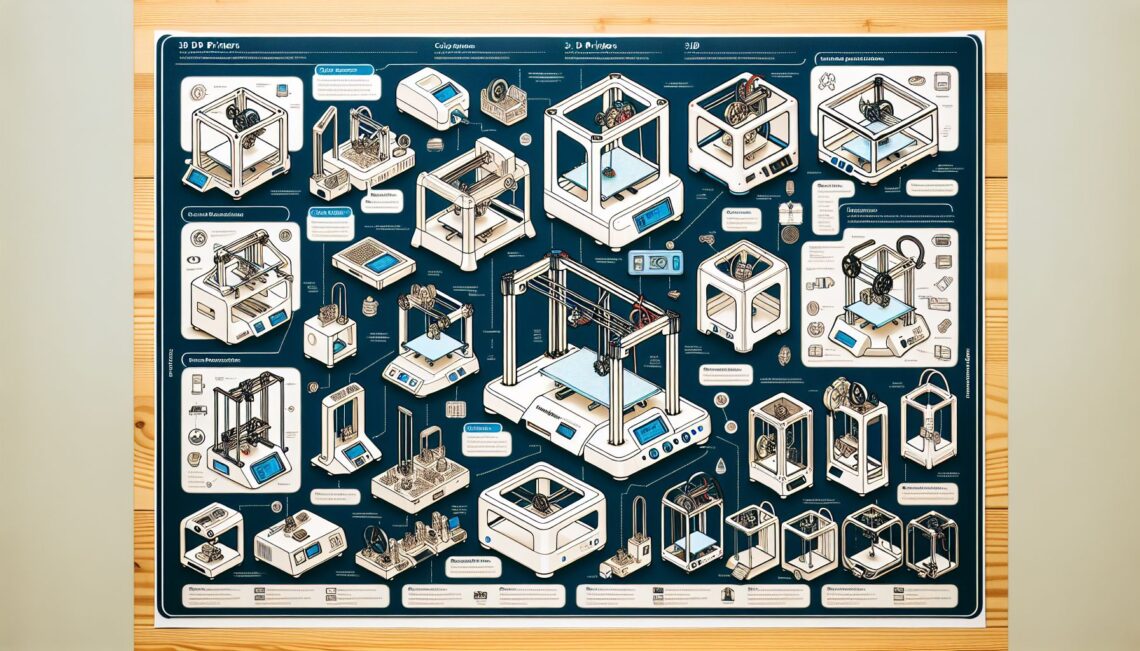
An Introduction to Various Types of 3D Printers: A Guide for College Students
3D printing has revolutionized the way we design and create objects. Whether you are an engineering student striving to bring your innovative ideas to life or an art student looking to create intricate sculptures, having access to a 3D printer can open up a world of possibilities. However, with the wide range of 3D printers available on the market, it can be overwhelming to choose the right one for your needs, especially when considering the limitations of a college student’s budget. In this guide, we will explore different types of 3D printers, their unique features, and their respective price ranges, enabling you to make an informed decision.
Fused Deposition Modeling (FDM) Printers
Fused Deposition Modeling (FDM) printers are the most common and affordable type of 3D printers. These printers work by extruding a thermoplastic filament layer by layer to create the desired object. FDM printers are widely used in various fields, ranging from engineering to education due to their simplicity and accessibility.
Entry-level FDM printers such as the Creality Ender 3 or FlashForge Finder can be purchased at prices under $300. These printers are compact and reliable, making them a popular choice among college students who are just starting their 3D printing journey. Although they may lack some advanced features, they are capable of creating functional prototypes and basic artistic designs.
For students seeking higher precision and additional features, mid-range FDM printers like the Prusa i3 MK3S or the Ultimaker 3 offer enhanced capabilities. Priced between $600 and $2000, these printers often feature auto-leveling, wireless connectivity, and increased build volume. They provide a balanced combination of affordability and quality.
Advanced FDM printers, such as the Formlabs Form 3 or the Ultimaker S5, offer professional-grade printing with superior precision and versatility. These printers can handle complex designs with high resolution and can print with a range of materials, including flexible filaments and composite materials. However, they come at a higher price, typically ranging from $3000 to $5000.
Stereolithography (SLA) Printers
Stereolithography (SLA) printers function by using a laser to solidify resin, creating highly detailed objects. SLA printers are renowned for their ability to produce intricate designs with smooth finishes, making them a popular choice among artists, jewelry designers, and product designers.
Entry-level SLA printers, such as the Anycubic Photon or the Elegoo Mars, offer excellent print quality at an affordable price. Priced around $200 to $300, these printers provide a stepping stone into the world of resin printing, allowing college students to unleash their creativity with stunning precision.
Mid-range SLA printers like the Peopoly Moai or the Formlabs Form 2 are suitable for applications requiring higher resolution and reliability. Priced between $1000 and $3000, these printers offer adjustable settings for improved print quality and a larger build volume, making them suitable for more demanding projects.
Professional-grade SLA printers, such as the Formlabs Form 3 or the 3D Systems ProJet 660 Pro, are the top choice for professionals working in various industries. With advanced features like continuous printing and compatibility with a wide range of resins, these printers can handle complex prints with utmost precision. However, their price ranges from $5000 to $10,000, making them less accessible for college students.
Selective Laser Sintering (SLS) Printers
Selective Laser Sintering (SLS) printers enable the creation of objects by sintering fine particles of powdered material, such as nylon, together using a laser. SLS printers are known for their ability to produce high-strength and flexible parts, making them ideal for functional prototypes, mechanical engineering, and product design.
SLS printers are typically more expensive due to their advanced technology. Entry-level SLS printers are not widely available for individual consumer use at affordable prices. However, some manufacturers offer SLS printing services or access to SLS printers through universities or makerspaces.
For professionals requiring SLS printing capabilities, industrial-grade SLS printers from companies like Formlabs or 3D Systems are available. These printers are capable of producing highly detailed and durable objects, but their price can vary greatly, typically starting from $10,000 and reaching up to hundreds of thousands of dollars.
In Conclusion
While 3D printing technology has become more accessible in recent years, the choice of a suitable printer for college students can still be overwhelming. FDM printers offer the most affordable entry point, with options to upgrade as needed. SLA printers provide exceptional detail for artistic and design-oriented projects. Meanwhile, SLS printers are highly specialized and often reserved for industrial applications.
Consider your project requirements, budget, and long-term goals when choosing a 3D printer. Remember, affordability doesn’t have to mean compromising quality, as there are various reliable options available for college students at different price points. With the right printer in hand, you can bring your imagination to life and embark on a journey of creativity and innovation.
You May Also Like

The Role of 3D Modeling in Roofing Projects
September 25, 2023
The Power of 3D Modeling and 3D Printing: Unlocking Creativity for College Students
December 5, 2023

